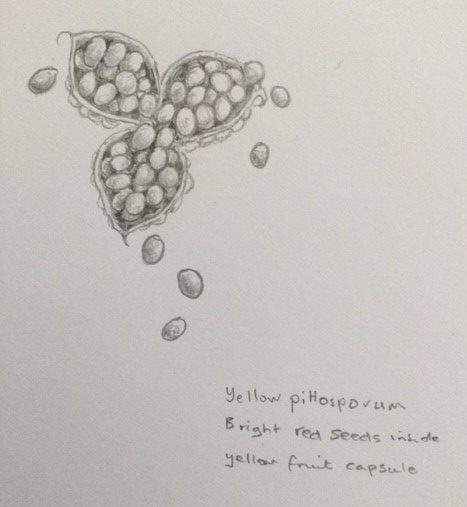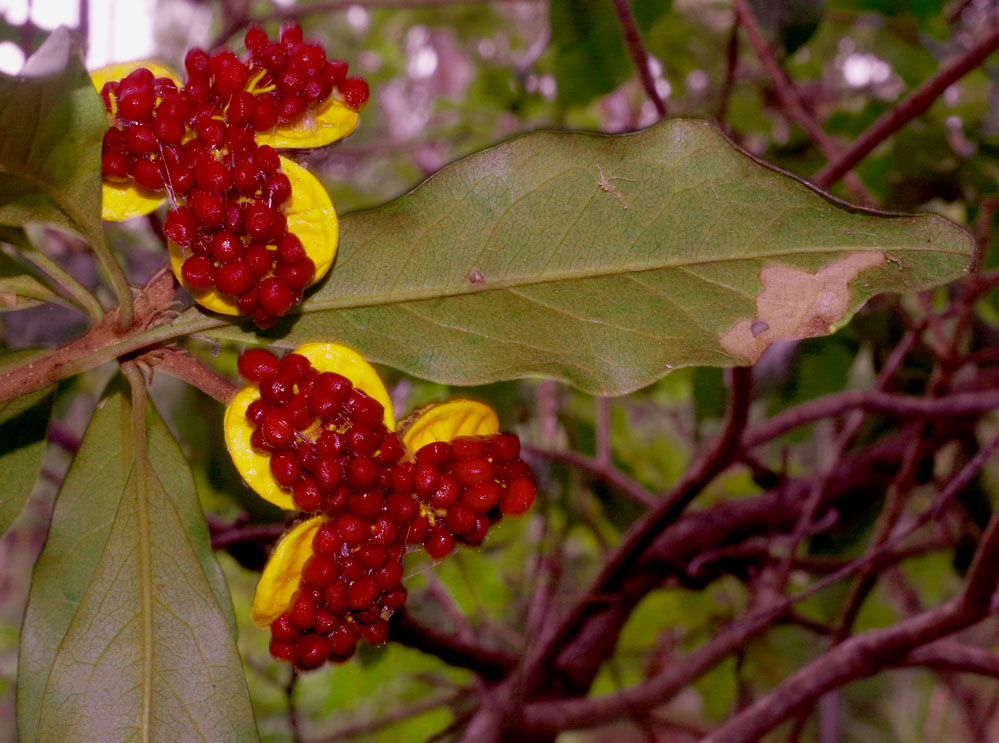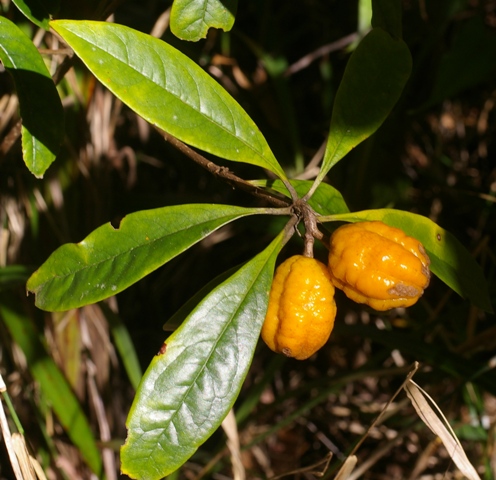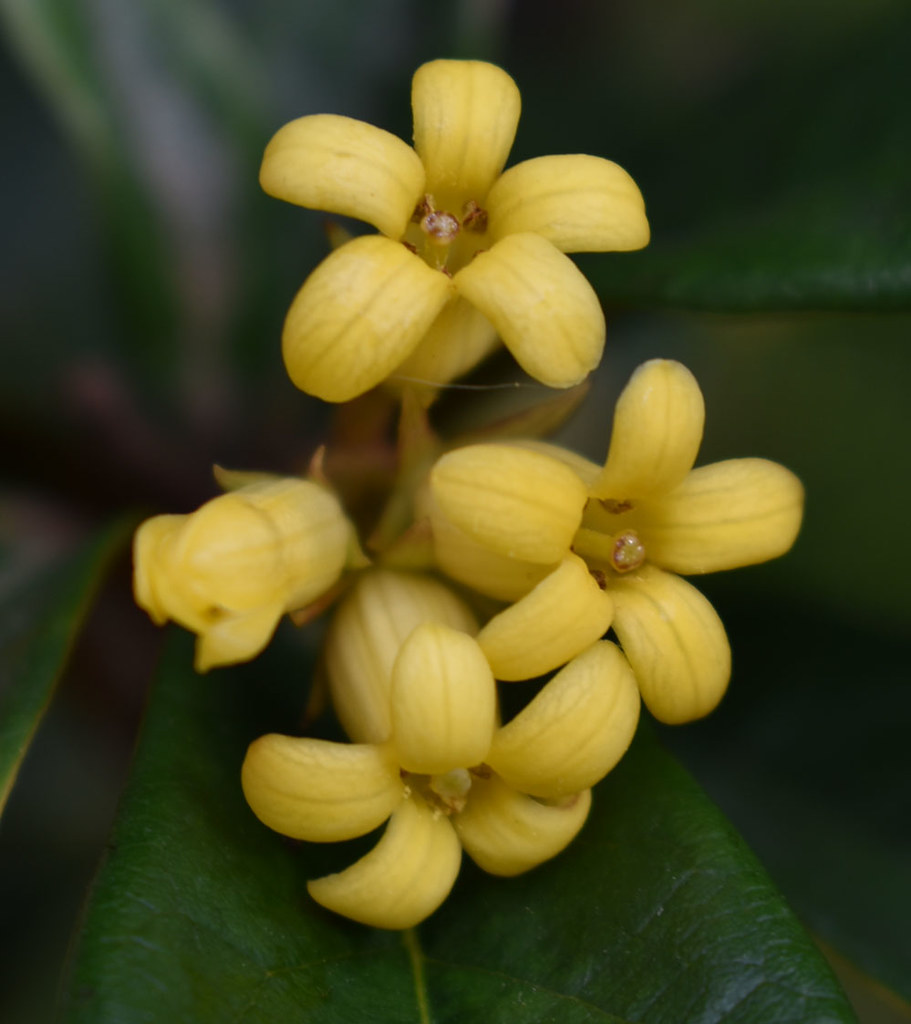Yellow Pittosporum (Pittosporum revolutum) is also known as Hairy Pittosporum, Brisbane Laurel and Lemon-fruit Pittosporum, the tree is a member of the family Pittosporaceae. World-wide there are up to 200 species of Pittosporum; 16 species within Australia with six occurring in Tropical Queensland.
The name derives from pitys (pine or resin) and spora (seed), referring to the sticky seeds. Revolutum derives from revolutus, (rolled back) referring to the leaf margin.
Yellow Pittosporum usually remains a shrub, growing to around 3 metres but occasionally will grow to a small tree. There are separate male and female plants. Yellow Pittosporum occurs naturally from Queensland to Victoria in rainforests as well as in wet sclerophyll country at altitudes up to 1100 metres. It is an attractive shrub, eye-catching when bearing its bright orange or yellow fruit.
Yellow Pittosporum leaves are simple, alternate or opposite; they have wavy edges and are clustered towards the ends of branches, making them appear whorled. Leaf size can be 50 -220 mm x 15 – 70 mm. The upper side is slightly hairy but the underside is covered with dense, rusty hairs. Small scale-leaves are usually present. Lateral veins on the leaf curve well inside the lateral margin, forming distinct loops. Small white or brown lenticels (small raised, corky areas) are usually visible on the twigs.
Fragrant, yellow flowers are carried on axillary or terminal umbels or racemes during August to October. They are partly tubular, opening to five petals. The calyx can be green, yellow, red, purple or brown.
The yellow to orange fruit capsules appear from April to July. The capsules are warty or lumpy surfaced, about 12-25 mm x 11-21 mm in size and may be two or three valved. These carry 20 to 76 red, sticky seeds.
The seeds are eaten by Satin Bower-birds and Figbirds while the flowers attract bees, butterflies and other insects. Although the seeds are bitter it is known that they were eaten by Aborigines. Uses for the plant range from hedges and screening, erosion control (it germinates readily and is fast-growing), and for fragrant oils.
Around Paluma, I have found the Yellow Pittosporum growing in the re-vegetation area just outside the village and among the plants along the roadsides. Flowering could be any time now, and there may be some late fruit clinging to the branches, so keep a lookout for this attractive plant.
Text and drawings by Colwyn Campbell





